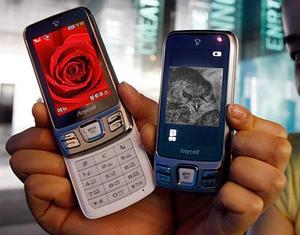New app turns cell phones into night vision devices
Researchers develop an application for cell phones which turn the phones into night-vision devices; standard night vision goggles use a photocathode to convert invisible infrared light photons into electrons; the new imaging device replaces the vacuum tube with several layers of organic semiconductor thin film materials

The grayscale image is a night-vision app image // Source: nexus404.com
Call it Nitelite: The newest app for cell phones might be night vision. A University of Florida engineering researcher has crafted a nickel-sized imaging device that uses organic light-emitting diode technology similar to that found in cell phone or laptop screens for night vision. Unlike night vision goggles, which are heavy and expensive, the device is paper-thin, light, and inexpensive, making it a possible add-on to cell phone cameras, even eyeglasses, once it is enlarged.
“Really, this is a very inexpensive device,” said Franky So, a UF professor of materials science and engineering. “Incorporating it into a cell phone might not be a big deal.”
So is the lead author of a paper about the infrared-to-vision device that appeared in a recent issue of the journal Advanced Materials. Do Young Kim, a postdoctoral associate in materials science and engineering, co-authored the paper and collaborated with So on the project.
Standard night vision goggles use a photocathode to convert invisible infrared light photons into electrons. The electrons are accelerated under high voltage and driven into a phosphorous screen, producing greenish images of objects not visible to the eye in darkness. The process requires thousands of volts and a cathode ray tube-like vacuum tube made of thick glass. That is why the goggles tend to be bulky and heavy.
So’s imaging device replaces the vacuum tube with several layers of organic semiconductor thin film materials. The structure is simple: It consists of aphotodetector connected in series with an LED. When operating, infrared light photons are converted into electrons in the photodetector, and these photo-generated electrons are injected into the LED, generating visible light. The device - versions range from millimeter- to nickel-size — currently uses glass, but it could be made with plastics, which would make it lightweight.
Conventional night vision goggles or scopes weigh one to two pounds, with price tags ranging from hundreds to thousands of dollars. Sized for cell phones, So said, his imaging devices weigh just a couple of ounces and would be inexpensive to manufacture because factories could use the same equipment used today to make laptop screens or flat-screen televisions.
So said other applications could include night vision technology for car windshields, or even for standard glasses to use at night.
